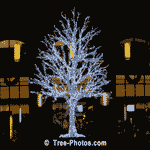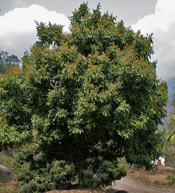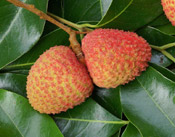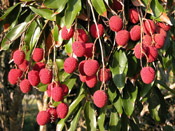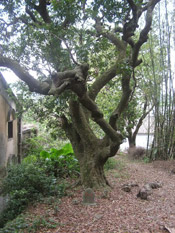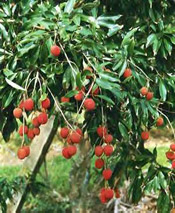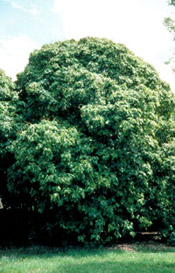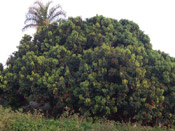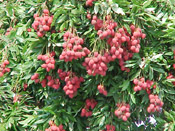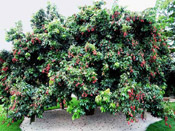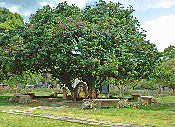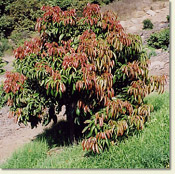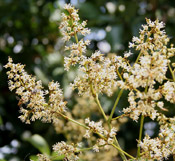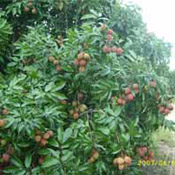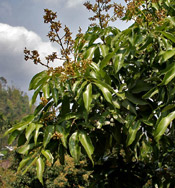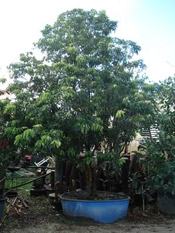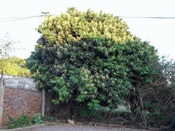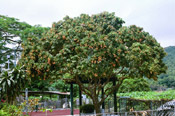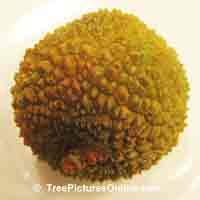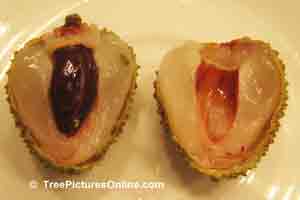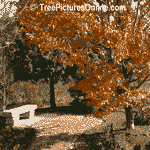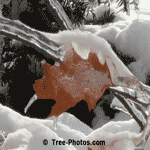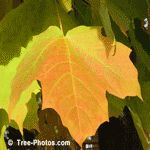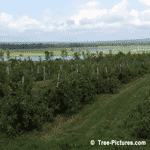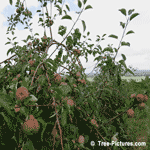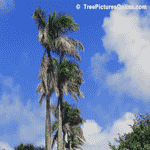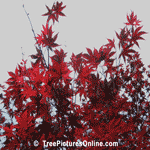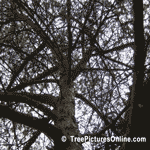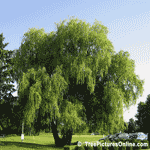Litchi Tree Pictures
Welcome to our litchi tree pictures page.
Litchi name may also be spelled as Lychee or Lichi and it a tropical fruit tree.
In our Lychee tree photo gallery you will find lots of nice pictures of litchi trees.
Litchi Tree Facts
You will also find a lot of wonderful information on litchi trees, including information about the litchi tree species, planting information, and much more.
Lychee fruit fact is generally eaten fresh and that the fruit ceases to ripen once harvested..
This is valuable and useful information that can help you to learn more about the litchi tree.
Litchi Tree Pictures
Full size each litchi tree image you like, just click on the litchi tree image to enlarge.
Enjoy these pictures of the litchi trees and it's fruit.
Pictures of Litchi Trees
Litchi, Facts & Information on the Litchi Tree Species
Litchi Tree Scientific Name: Litchi chinensis
Litchi Cultivare
- Litchi Amboina, ripens April to May
- Litchi Bengal, easy to grow
- Litchi Brewster, commercial crop in Florida
- Litchi Groff, latest ripening variety August to September
- Litchi Hak ip, flesh is crisp and sweet
- Litchi Kwa Luk, amazing flavor and fragrance
- Litchi Mauritius, good quality fruit
- Litchi No Mai Tsze, leading variety in China
- Litchi Tai tsao
Here is some general information on litchi trees.
The lychee (Litchi chinensis, and commonly called leechi, litchi, laichi, lichu, lizhi) is the sole member of the genus Litchi in the soapberry family, Sapindaceae. It is a tropical and subtropical fruit tree native to China, and now cultivated in many parts of the world. The fresh fruit has a "delicate, whitish pulp" with a "perfume" flavor that is lost in canning, so the fruit is mostly eaten fresh.
Lychee is an evergreen tree, reaching 10 to 20 m tall, bearing fleshy fruits that are up to 5 cm (2.0 in) long and 4 cm (1.6 in) wide. The outside of the fruit is covered by a pink-red, roughly-textured rind that is inedible but easily removed to expose a layer of sweet, translucent white flesh. Lychees are eaten in many different dessert dishes, and are especially popular in China, throughout South-East Asia, along with South Asia.
Lychee has a history of cultivation, going back as far as 2000 BC according to records in China. Cultivation began in the area of southern China, Malaysia, and northern Vietnam. Wild trees still grow in parts of southern China and on Hainan Island. There are many stories of the fruit's use as a delicacy in the Chinese Imperial Court. It was first described and introduced to the west in 1782.
L. chinensis is an evergreen tree that is frequently less than 10 m (33 ft) tall, sometimes reaching more than 15 m (49 ft). The bark is grey-black, the branches a brownish-red. Leaves are 10 to 25 cm (3.9 to 9.8 in) or longer, with leaflets in 2-4 pairs. Flowers grow on a terminal inflorescence with many panicles on the current season's growth. The panicles grow in clusters of ten or more, reaching 10 to 40 cm (3.9 to 16 in) or longer, holding hundreds of small white, yellow, or green flowers that are distinctively fragrant.
Fruits mature in 80 to 112 days, depending on climate, location, and cultivar. Fruits reach up to 5 cm (2.0 in) long and 4 cm (1.6 in) wide, varying in shape from round, to ovoid, to heart-shaped. The thin, tough inedible skin is green when immature, ripening to red or pink-red, and is smooth or covered with small sharp protuberances. The skin turns brown and dry when left out after harvesting. The fleshy, edible portion of the fruit is an aril, surrounding one dark brown inedible seed that is 1 to 3.3 cm (0.39 to 1.3 in) long and .6 to 1.2 cm (0.24 to 0.47 in) wide.
Lychees are extensively grown in China, and also elsewhere in South-East Asia, Thailand, Laos, Cambodia, Vietnam, Pakistan, Bangladesh, India, southern Japan, and more recently in California, Hawaii, Texas, Florida, the wetter areas of eastern Australia and sub-tropical regions of South Africa, Israel and also in the states of Sinaloa and San Luis Potosí (specifically, in La Huasteca) in Mexico. They require a warm subtropical to tropical climate that is cool but also frost-free or with only very slight winter frosts not below -4 degrees celsius, and with high summer heat, rainfall, and humidity. Growth is best on well-drained, slightly acidic soils rich in organic matter. A wide range of cultivars is available, with early and late maturing forms suited to warmer and cooler climates respectively. They are also grown as an ornamental tree as well as for their fruit.
Lychees are commonly sold fresh in Asian markets, and in recent years, also widely in supermarkets worldwide. The red rind turns dark brown when the fruit is refrigerated, but the taste is not affected. It is also sold canned year-round. The fruit can be dried with the rind intact, at which point the flesh shrinks and darkens. Dried lychee are often called lychee nuts, though, of course, they are not a real nut.
Litchi Cultivars
There are numerous lychee cultivars, with considerable confusion regarding their naming and identification. The same cultivar grown in different climates can produce very different fruit. Cultivars can also have different synonyms in various parts of the world. Southeast Asian countries, along with Australia, use the original Chinese names for the main cultivars. India grows more than a dozen different cultivars.
Litchi Food Value
The Lychee contains on average a total 72 mg of Vitamin C per 100 grams of fruit. On average nine lychee fruits would meet an adult's daily recommended Vitamin C requirement.
Feature Litchi Species: Chinese Litchi
Litchi, Chinese
Litchi chinensis
Litchi chinensis is the only litchi tree that is grown for commercial purposes. The tree is slow growing and rarely grows more than 50 feet in height.
Leaves are approximately 4 to 10 inches in length with 2 to 4 pairs of leaflets which repel water. The tree produces clusters of small, white, yellow or green flowers which are distinctively fragrant. The fruit is pinkish red when ripe and contains a fleshy jelly-like fruit inside a tough inedible skin. Prefers deep, rich well drained soil.
Type of Tree:
The Chinese Lychee falls into the following type(s): Ornamental Tree, Fruit Trees
Mature Height:
The Chinese Litchi grows to be 50' - 60' feet in height.
Mature Spread:
20 - 40 ft
Growth Rate:
This tree grows at a slow growth rate.
Sun:
The lychee tree does well in full sun.
Soil:
The Chinese Lychee prefers rich, deep, well drained acidic soils rich in organic matter.
Moisture:
Well drained. The tree cannot tolerate standing water
Shape:
Mature tree crowns tend to be round in shape.
Leaves:
Evergreen leaves from this tree are up to 20 inches long, these large pinnate leaves consist of
3 to 6 pairs with no terminal leaf
Flower Color:
Small, fragrant white or yellow/green flowers arranged in loose clusters.
Bloom Time:
Spring.
Fruit Description:
The litchi season starts in December and continues for a few weeks into January. The fruit of the Chinese Litchi tree are pinkish red golf ball sized fruits that when peeled reveal a white, jelly-like sweet interior and large seed. The fruit must be allowed to ripen on the tree. They are picked by hand using ladders to reach the fruit on the tree. Litchis are better eaten fresh, but if kept cool in the refrigerator they should be eaten within 3 days.
Additional Information: Chinese litchi
Attributes:
The Lychee tree is an ornamental evergreen tree with dense green foliage. It produces abundant delicious fruit which when peeled reveal white, almost translucent flesh. They are perfect served in fruit salads or with ice cream.
Description:
Litchi chinensis is a dense round-topped tree with a smooth grey trunk and branches. The leaves are In spring the tree is covered with huge sprays of white flowers and are an attractive sight when in full fruit
Wildlife Value:
Birds are attracted to the colorful fruit.
History/Lore/Use:
The Lychee originated over 2000 years ago in the tropical rain forests of Southern China some trees have reached the ripe old age of 1000 years. The Chinese consider the lychee fruit a symbol of romance and love because of its colour and shape.
Lychee Tree Plantations
Lychee trees require full sun so should not be planted close to other trees or buildings. Number on producer of lychees is China, then India, other countries include Southeast Asia, Indian subcontinent and South Africa.
Lychee Tree Trivia
Lychee fruit cease to ripen once harvested, so it is important to allow the fruit to ripen on the tree.
The Litchi chinensis is a tropical fruit tree native to the low elevations of the Kwangtung and Fukien provinces in the Southern China.
The litchi tree in full fruit is an amazing sight.
Lychee are sometimes called 'Chinese strawberry' due to its origin and appearance.
Lychee trees grown from seed take 10 to 25 years or more to produce fruits.
Thank you for visiting our Litchi Tree Pictures at Tree Pictures Online.com, please come back soon for more great tree pictures!
Impressive Tree Pictures
Collection of Impressive Tree Images
Trees: Recent Tree Photos, Pics & Images |
||
Palm Tree Pictures |
Beech Trees |
Palm Trees |
Oak Tree Gallery |
Christmas Trees |
Maple Trees |
Apple Tree Photo Gallery |
Apple Tree Images |
Palm Trees Gallery |
Japanese Maple Trees |
Pine Tree Gallery |
Willow Trees Category |
Tree Facts, Trivia
United States land is covered by over 30 per cent with trees and forests
Tree wallpaper images can make beautiful backgrounds on your computer`s desktop. See our tree wallpaper photographs link in the left tree categories.
Thank you for visiting our Tree Pictures at TreePicture Online.com, please come back soon for more great tree photos!
Pictures Sites
Fireplace Pictures -
Tree Pictures -
Gazebo Pictures -
Symbols & Their Meanings
Resume Samples -
Church Pictures -
Manufactured Home Pictures
Natural Log Siding -
Shadow Puppets -
Caribbean Islands
Play Touch Games -
Waterfall Pictures
Make Hot Pictures - Job Application Forms
![]()



